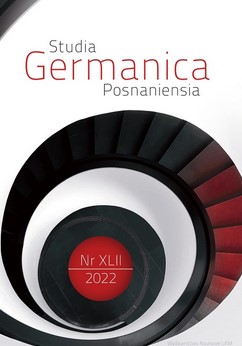„MORE HUMAN THAN HUMAN?“ EINE VERGLEICHENDE ANALYSE ZUR CYBORG-FIGUR UND LEIB-SEELE-DICHOTOMIE IN DEN FILMEN „BLADE RUNNER (1982)“ UND „BLADE RUNNER 2049 (2017)”
“MORE HUMAN THAN HUMAN?” A COMPARATIVE ANALYSIS OF THE CYBORG FIGURE AND BODY-SOUL DICHOTOMY IN “BLADE RUNNER (1982)” AND “BLADE
RUNNER 2049 (2017)”
Author(s): Shiqi YUSubject(s): Social Philosophy, Existentialism, Film / Cinema / Cinematography, ICT Information and Communications Technologies
Published by: Uniwersytet im. Adama Mickiewicza w Poznaniu
Keywords: posthuman; science fiction; dualism (mind/body; male/female; culture/nature); cyborg body;
Summary/Abstract: Seen from a double de-centering perspective, the posthuman subject is understood as an alternative to the traditional subject theory, which has been defined as the liberal-humanist subject (i.e. rational and autonomous) since the Enlightenment. The posthuman subject not only eliminate anthropocentrism but also liberate itself from the individualized view of the subject, which is centered on consciousness. In the two selected dystopian science fiction films Blade Runner (1982) and Blade Runner 2049 (2017), the cyborg figure, which originates from Donna Haraway’s manifesto, is treated and considered as a new interpretative possibility of human existence. The media adaptation of the posthuman motif makes the body itself a border crosser and enables the dissolution of boundaries. Focusing on the cinematic version of human machines and machine men, the intertwining of human, technology and gender, as well as the dilemma of existence will be analyzed, as the question ultimately recurs to a cinematic representation of the dualism between the immortal soul and the infertile body (reproduction of the cyborg body)
Journal: Studia Germanica Posnaniensia
- Issue Year: 2022
- Issue No: 42
- Page Range: 253-268
- Page Count: 16
- Language: German

